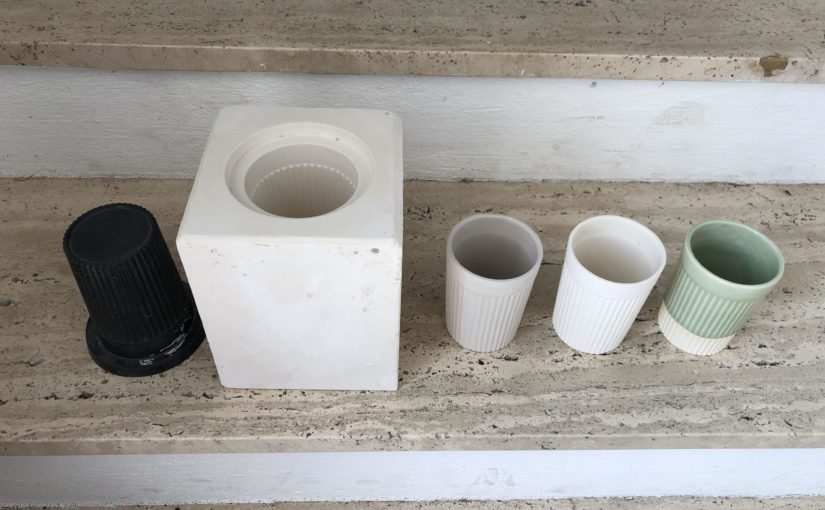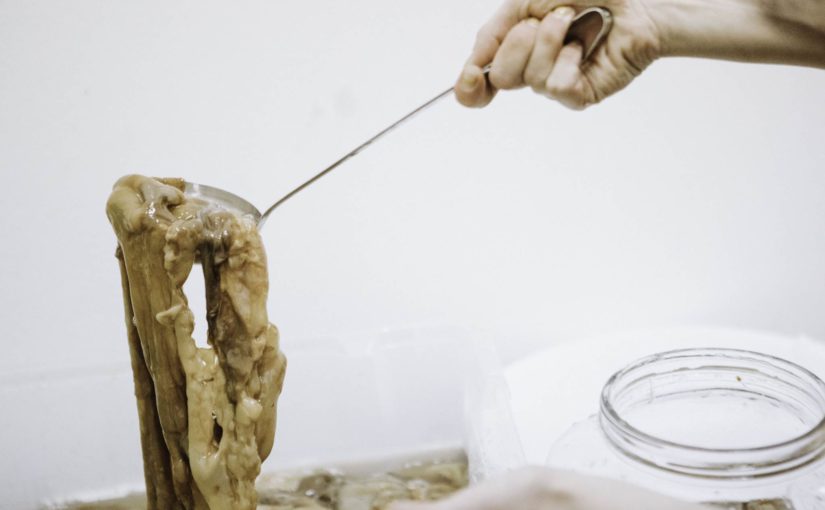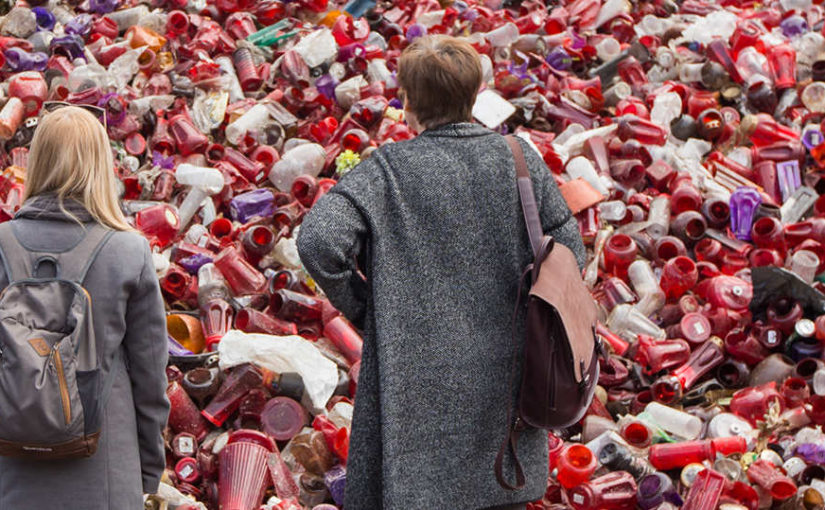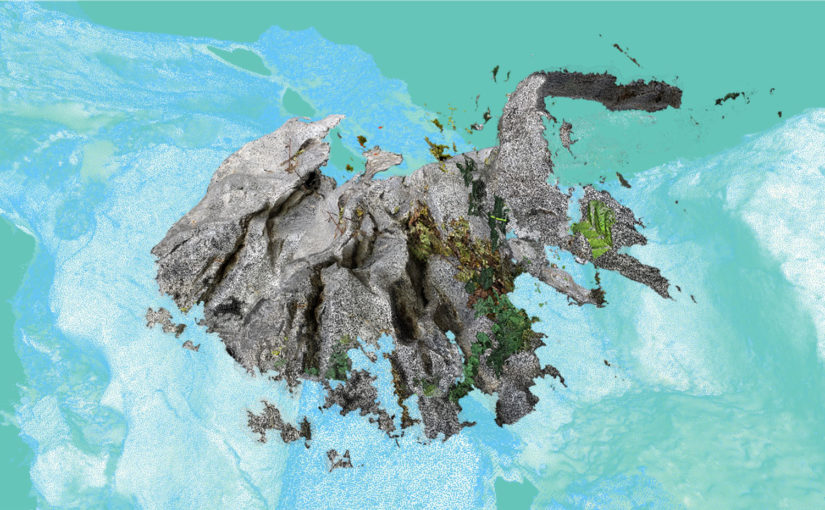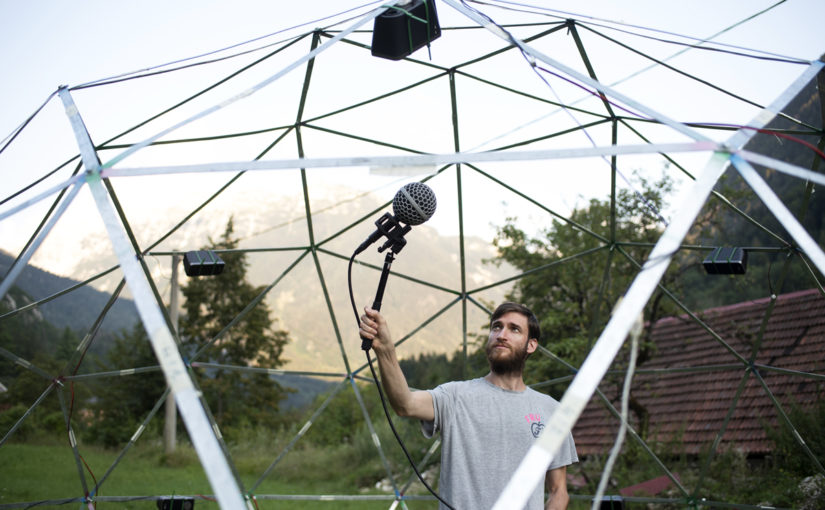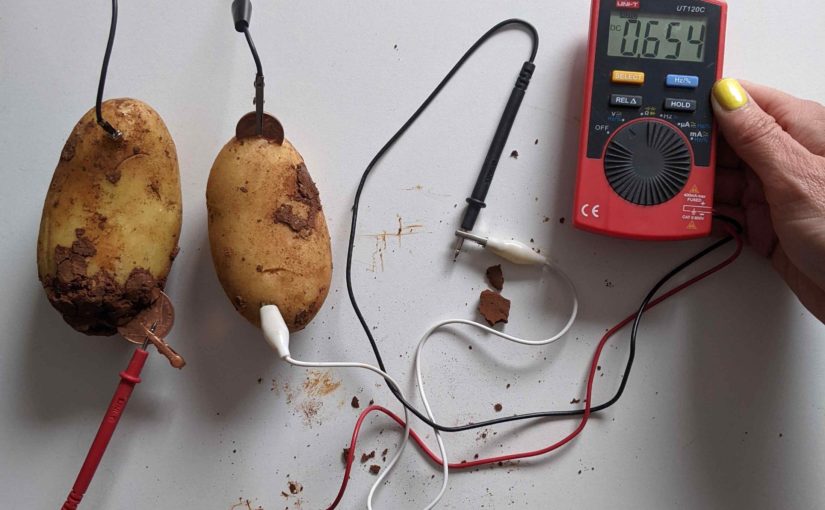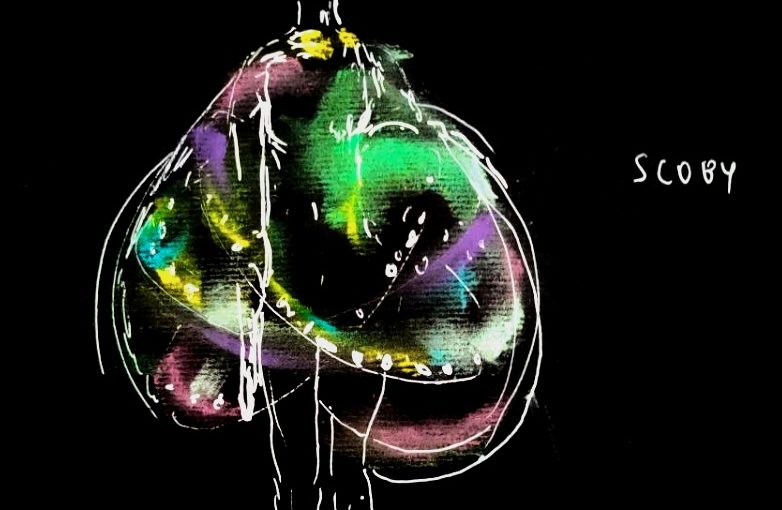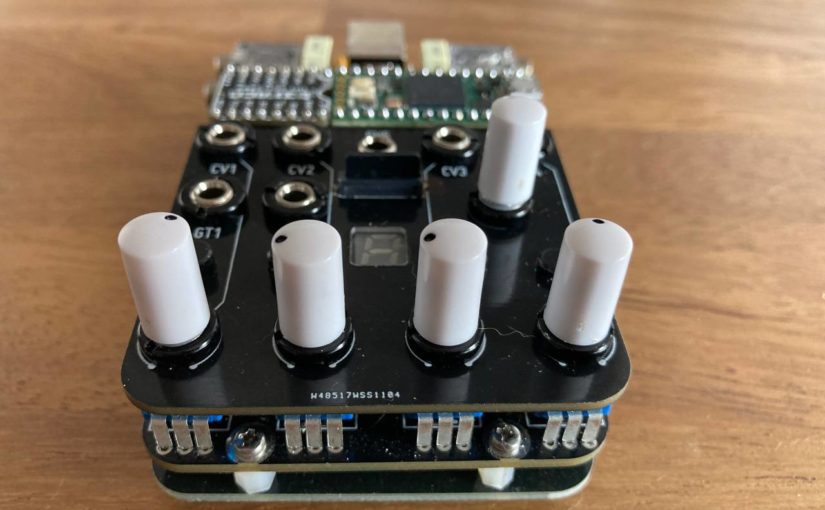Martin Mušič, a part of Baobap collective, is planning to design a useful ceramic product with a story connected to Soča Valley. He will use the 3D printer to make a prototype, which will be used as a plaster mold for casting liquid clay in it. He is also planning to build an outdoor furnace out of locally sourced materials and burn the clay products in there. The finished ceramic products will have an extra kick – a story with a local connection.
Category: Participants
Cabinet Of Curiosities
Last year’s PIFresidency artist, Maggie Kane, will continue leading their integrative communal build project that centers digital storytelling and upcycled material (re)use at PIFcamp this summer. In 2022, Maggie led a group of artists in Ljubljana to build a freestanding wooden structure that houses interactive controls, a Raspberry Pi, and a digital screen. This summer, Maggie will host a workshop on how to build basic HTML games that allow participants to explore personal stories or memories that they have & how they can incorporate those experiences into an interactive game using the open-source platform Bitsy.
Experimental Scoby Therapy
In Experimental Scoby Therapy, developed by Nastja Ambrožič and Celeste Sanja Smareglia, the visitor is immersed in an immersive experience under the dome of Blaž Pavlica while lying down. In the comfort of the cushioned mattress, the sound coming from the e-textile DIY speakers sewn into the pillows, and the animations spreading across the projection screen on top of the dome, the user will get in touch with the symbiotic organism SCOBY. Capacitive sensors made of SCOBY paste, connected to the OctoSens interface, and other sensors that read physiological changes will form a key part of the therapeutic experience. The signals read from the sensors will be converted into sound frequencies and colorful visualizations. The experimental therapy will be a meditative, hypnotic conversation between humans and bacteria, a sensual dance of sound and visuals in the ambient silence of the dome.
The immersive experience is based on the use of SCOBY, a living symbiotic organism of bacteria and yeasts, commonly used for the fermentation of tea in the popular kombucha drink. In our case, SCOBY will be used as a sensor, as it has the ability to detect changes in the environment, such as skin conductivity. The values collected through the sensors will be converted into audio and visual signals, the effects of which will be reciprocally mirrored in the subsequent meter values. A communication loop will be established in the experimental therapy.
What about PIFcamp and sustainability?
PIFcamp joins forces with a local NGO Ecologists without Borders who will provide a more circular event and shed some light on the issue of waste. During the camp they will also focus on further developmentent of the carbon footprint calculator for PIFcamp participants and other events which are part of Rewilding Cultures project. Its aim is encouraging participants toward more sustainable mobility and assessing the total level of transport-related emissions.
Ecologists without Borders is a non-profit founded in 2009 and one of the leading Slovenian NGOs dedicated to improving the state of our environment — focusing on efficient resource use and active citizenship; and implementing the concept of zero waste on several levels – individual, municipal, governmental and within organizations — including cultural ones. Jaka Kranjec, who will join PIFcamp, is their expert on policy, and a researcher of the useless world, a developer of open source solutions and a lover of puzzles who believes in free access to knowledge in the spare time.
Artificial Intelligence Listens to the Trees
Nejc Trampuž, a young multimedia artist from Slovenia, will host a workshop on creating art with the help of artificial intelligence tools that he has been using in his work for the past year and a half. He will mainly introduce tools that enable generation of animations: the open-source Stable Diffusion (Deforum, ControlNet) in Automatic 1111 WebUI. The workshop will also be a space for sharing knowledge of others among participants and for discussing the society of the future that artificial intelligence brings on one hand, and the ecological threat on the other.
In addition to the workshop his goal is to work on his project with the working title “We Must First Listen to the Trees,” which is being developed under the scholarship from the Slovenian Ministry of Culture. The emerging short experimental generative animated film, created with the assistance of artificial intelligence – both in terms of the screenplay and animation – will reflect society in relation to the environment and ecosystem. It will conceive and present sustainable and environmentally friendly ways of living.
The River Knows by duo Swamp_Matter
The project aims to engage with water scarcity and real-time visual storytelling to speculate on climate futures of the Soča River in Slovenia. The bed of the glacial river has been shaped by its waters in remarkable geological formations for millennia. Recently the river’s water level has been low due to summer drought, a consequence of anthropogenic factors. The project looks at the interplay and relationship between humans and the river’s geological processes. It reflects on changing ecologies and raises awareness for the conservation of this important water ecology through speculation. The project aims to use 3D scanning and photogrammetry to create a digital extension of the Soča landscape with particular attention to the dry riverbed and glacial rocks. The digital landscape will be linked to sensors placed in the landscape recording various parameters in real-time (landscape sound, water level, pollution, rainfall) which will create distortions and deformations within the digital landscape.
Swamp_Matter is a duo consisting of Eva Garibaldi (designer & researcher) and Ana Laura Richter (artist & dramaturg) motivated by a shared passion for exploring the complexities and mysteries of amphibious landscapes. Their work is driven by a deep curiosity about the relationship between humans and nature, and the ways in which this relationship is constantly evolving. Through their projects, Swamp_Matter seeks to challenge the perception of unstable landscapes as stagnant and lifeless places, and instead, highlight the rich biodiversity and ecological significance of these often-overlooked environments.
We invite you to apply and develop immersive sound works with the support and help of Blaž Pavlica!
The Immersive Sound Dome is a project of Blaž Pavlica, which he has been developing for the last years and upgrading every year at PIFcamp. The project was developed out of a desire to create immersive sound, but also as an experiment in how to create such an environment with limited resources – when the project started in Slovenia, this option was not yet available. The latest version consists of a geodesic dome (designed by Staš Vrenko), 16 loudspeakers and a computer.
We invite you to submit your idea for a PIFproject that will be able to come to life in the Immersive Sound Dome with the technical support and mentoring of Blaž Pavlica. Your proposal can be anything related to immersive sound (music composition, algorithms, synthesis…), but we also welcome slightly different projects, such as lighting or decorating the dome.
For more information contact the author: blaz.pavlica[at]gmail.com
Potato Computer Club
Over the past year, Becca Rose has been exploring computers with potatoes and found that many wonderful stories emerge in the process. Almost everyone has a potato story and spuds have a wondering way of connecting people and making the seemingly complex or hardness of talking about computation disappear.
As pedagogical apparatus, potatoes bring many modes of being and thinking into spaces of computing through their stupidity, questioning of computing mastery, the activation of collective storytelling, and forgetting of traditional ways of doing computing. Join the Potato Computer Club and learn about different technologies, tools, and practices… Becca is planning on making some logic gates, speakers, and maybe some kind of potato heads,.. do you already know what kind of potato computers can we make atc PIF???
eMotion bubble
Raising emotional awareness and improving emotional intelligence.
In many social situations, it is necessary to hide our emotions – take for example, that you dislike your boss. Just because you don’t like him doesn’t mean you can openly express your feelings, because that would leave you jobless. In this kind of situation, suppressing our emotional expression is beneficial to us. Decreasing our outward expression of felt emotions is called ‘emotion suppression’, and many people are very good at it.
Research has shown that although emotional suppression decreases outward signs of emotion, it does not actually lower emotional experience of the person. Hiding one’s feelings doesn’t actually make them go away. Emotional suppression increases the physical symptoms experienced, such as sweating or increased heart rate. Sadly, it also has negative effects on cognitive functioning. Anything which is suppressed for long goes to the unconscious mind, which eventually gets its release through undesirable behaviors unconsciously. Emotions serve as a useful indicator as well as a warning signal, indicating how we are progressing through life at any given time. When we experience an emotion, it means our brain has identified a change in the environment that is relevant to us- our health, objectives, or concerns. It brings those things to our attention which emphasizes us to express.
Emotions are what gives communication life, so inclusion and display of emotions are considered important to maintain an effective social communication. We express emotions with our bodies, intentionally or unintentionally, with various face expressions, gestures, vocal tones and bodily movements. But manifestations of our emotional states occur not only with the observable bodily
changes such as trembling hands, burning cheeks etc., but also with unobservable reactions such as
racing hearts, tightness in chest, raised blood pressure etc.
In addition to the hard-to-control physiological responses, people use all sort of controllable elements of appearance, such as garments, jewelry, and accessories to express themselves. Self-built physical appearance helps to express moods and emotions (in a socially acceptable way). The clothes or the accessories people wear, make statements and express something about themselves, they reveal their choices and emphasize their identity and personality through display of clothes. People interpret these visual statements as they want, but we can always redefine our appearance with the way we dress and with the expressive abilities of our bodies.
One way to express ourselves in contemporary, fast pace, networked and wireless society, is via wearable technologies. With capabilities of available technology, customization and user–centered approaches transferred to clothing design, we are able to create interactive systems that allow users to define their final appearance, with better possibilities for self-expression and interfaces involvement in electronic networks.
Nastja Ambrožič will design and construct a wearable prototype where LED are incorporated into fabrics and clothes to display emotions and personality of the wearer. Her starting point will be a DIY heart rate sensor, which will be incorporated on the wearer’s body and connected with wires on a sphere-like structure dress, called ‘eMotion bubble’, which will show changes in the person’s emotional states (changes in heartbeat).
Lina Bautista & Manu Retamero: Fantasía
“As audio lovers, we enjoy developing sound-making tools, and we feel very lucky to have amazing community-driven tools at our disposal, that enable us to easily learn about creative design,” explain Lina and Manu. “To give back to the community we are constantly learning from, we focus on making our own designs available during workshops to help others build their own sound machines.”
During PIFcamp the pair from Familiar DIY will be working on a new workshop-oriented device: Fantasía!
Fantasía is a device based on Teensyduino audio platform, with stereo audio inputs and outputs, potentiometers, buttons, Gate and CV control, SD card, etc. It can work as a synthesizer, multi-effect, or utility tool with endless possibilities… while being a portable DIY-friendly device. “During PIFcamp we’re going to create some sketches/programs for the Fantasía, test hardware boundaries and make some noise, and we encourage others to create their own too!“
For those who want to contribute to the Fantasía library during PIFcamp, Lina and Manu have prepared some DIY kits with which you can build your own devices, and take them home as a thank you for your contribution. Fantastic!
